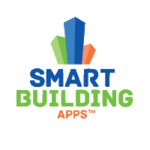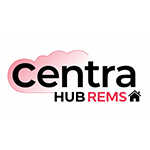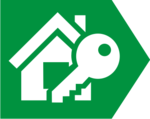Description

Smart Building Apps

CentraHub REMS

ProNest
Comprehensive Overview: Smart Building Apps vs CentraHub REMS vs ProNest
Here's a comprehensive overview of Smart Building Apps, CentraHub REMS, and ProNest, focusing on their primary functions, target markets, market share, user base, and key differentiating factors:
Smart Building Apps
a) Primary Functions and Target Markets:
-
Functions: Smart Building Apps are designed to enhance the efficiency, security, and environmental sustainability of buildings. They integrate IoT devices, sensors, and analytics to manage lighting, HVAC systems, security, energy usage, and tenant services. Solutions may include automated energy management, predictive maintenance, occupancy monitoring, and seamless connectivity for users within the building.
-
Target Markets: These apps primarily serve commercial real estate, large corporate offices, healthcare facilities, educational institutions, and increasingly, residential complexes. Facility managers, property owners, and building operators are typical users.
b) Market Share and User Base:
- The Smart Building Apps market is highly fragmented, with major tech firms and specialized companies each holding parts of the market share. Companies like Johnson Controls, Honeywell, Siemens, and Schneider Electric are major players in the space, alongside niche startups that focus on specific aspects like energy management or security.
c) Key Differentiating Factors:
- Integration capabilities with existing building systems and third-party IoT devices.
- User interface and ease of use.
- Customizability and scalability for different building sizes and types.
- Data analytics and reporting features.
CentraHub REMS
a) Primary Functions and Target Markets:
-
Functions: CentraHub REMS (Real Estate Management System) is a comprehensive property management software. It handles leasing, sales, property maintenance, tenant management, CRM, and financial management. It aims to streamline operations for real estate management.
-
Target Markets: Primarily targets real estate developers, property managers, and asset managers. It's used in commercial, residential, and mixed-use real estate businesses.
b) Market Share and User Base:
- CentraHub REMS competes with other property management solutions like MRI Software, Yardi, AppFolio, and Buildium. While it has a strong presence in certain regions, particularly the Middle East and Asia, its global market share is smaller compared to established giants in markets like North America and Europe.
c) Key Differentiating Factors:
- Its modular system allows users to integrate specific modules as needed, tailoring the software to their specific business requirements.
- Built-in CRM to handle tenant relationships, which is particularly useful for large real estate portfolios.
- Cloud-based infrastructure enabling remote management and real-time data access.
ProNest
a) Primary Functions and Target Markets:
-
Functions: ProNest is advanced CAD/CAM nesting software designed for the cutting industry, including plasma, laser, waterjet, and oxyfuel cutting. It optimizes material usage and enhances cutting speed and quality. Key features include automatic nesting, toolpath generation, cost calculation, and process optimization.
-
Target Markets: Targeted towards manufacturing facilities that leverage cutting technologies, such as metal fabrication, automotive, aerospace, and industrial equipment manufacturers.
b) Market Share and User Base:
- As part of Hypertherm, Inc., ProNest has a robust presence in the metal cutting industry. While exact market share figures are hard to pinpoint due to industry overlap, ProNest is widely adopted among fabricators seeking efficient nesting solutions. It competes with other CAD/CAM software like SigmaNEST, Lantek, and RhinoNest.
c) Key Differentiating Factors:
- Integration capabilities with various CNC machines and ERP systems.
- Emphasis on detailed costing and reporting features, helping manufacturers control costs and optimize production efficiency.
- Continuous development and updates that incorporate user feedback and industry requirements.
Comparative Summary
- Functionality: Smart Building Apps focus on building automation, CentraHub REMS on real estate management, and ProNest on manufacturing efficiency through optimal material usage.
- Target Market: Each serves distinct sectors — Smart Building Apps for facility management, CentraHub REMS for real estate, and ProNest for manufacturing.
- Market Presence: Smart Building Apps have a diverse market presence, CentraHub REMS is more region-focused, and ProNest enjoys significant adoption in the fabrication industry.
- Differentiators: Integration and IoT (Smart Building Apps), modularity (CentraHub REMS), and material optimization (ProNest) are their main differentiators.
While they serve different industries, these products show the diverse applications of technology in enhancing operational efficiency across sectors.
Contact Info

Year founded :
2008
Not Available
Not Available
Canada
Not Available

Year founded :
Not Available
Not Available
Not Available
Not Available
Not Available

Year founded :
1991
Not Available
Not Available
Egypt
Not Available
Feature Similarity Breakdown: Smart Building Apps, CentraHub REMS, ProNest
When comparing Smart Building Apps, CentraHub REMS, and ProNest, the analysis focuses on three aspects: core features, user interfaces, and unique features.
a) Core Features Common Across All Three Products:
-
Remote Monitoring and Control:
- All these applications offer remote monitoring and control functionality. Users can manage systems and access real-time data from anywhere.
-
Data Analytics:
- They provide data analytics capabilities for making informed decisions based on usage patterns, performance metrics, and operational efficiency.
-
Integration Capabilities:
- Integration with existing systems and platforms is a shared feature, allowing for seamless operations across various technologies.
-
User Management:
- Comprehensive user management features including roles, permissions, and access controls are standard across these solutions.
-
Reporting:
- They generate customizable reports that help stakeholders understand performance metrics and other essential data.
b) User Interfaces Comparison:
-
Smart Building Apps:
- Typically designed with IoT focus, they often feature intuitive dashboards that highlight real-time building data, alerts, and automation controls. The emphasis is on simplicity and functionality.
-
CentraHub REMS:
- CentraHub REMS boasts a user-friendly interface that caters to real estate and property management needs. Its design is more oriented toward property lifecycle, with modules organized in a way that facilitates easy navigation for property managers.
-
ProNest:
- ProNest, being more manufacturing and nesting-focused, provides a technical interface geared toward production managers and operators. It emphasizes precision and process optimization, with tools for project management and control inherent to manufacturing processes.
c) Unique Features:
-
Smart Building Apps:
- Unique for their advanced IoT capabilities that focus on green building technologies, including energy efficiency and environmental sensors. They often feature AI-driven predictive maintenance modules.
-
CentraHub REMS:
- Unlike the others, CentraHub REMS heavily focuses on real estate management. It's equipped with features for tenant management, lease tracking, and facility management, making it exceptional in the property sector.
-
ProNest:
- Distinctive for its CAD/CAM capabilities tailored for industrial purposes. It offers advanced nesting algorithms that optimize material usage, which is not typically found in the other two products.
In summary, while there are commonalities in terms of core functionalities like remote monitoring, data analytics, and integration, the distinct focus of each software on different sectors—IoT and smart buildings, real estate management, and industrial production—sets them apart in terms of user interface design and unique feature offerings.
Features

Not Available

Not Available

Not Available
Best Fit Use Cases: Smart Building Apps, CentraHub REMS, ProNest
When considering software solutions like Smart Building Apps, CentraHub REMS, and ProNest, it's important to evaluate the specific needs of a business or project to determine the best fit for these tools. Here's a breakdown of the suitable use cases for each:
a) Smart Building Apps
Best Fit for the Following Businesses or Projects:
- Commercial Real Estate: Ideal for managing large commercial properties, such as office buildings and shopping centers. These apps often offer features for tenant management, energy monitoring, and facility maintenance.
- Smart Cities and Infrastructure Projects: Suitably used in smart city projects for integrating IoT devices that monitor and optimize urban infrastructure.
- Residential Building Complexes: Can be used for community management, allowing residents to control access, utilities, and community facilities from a centralized app.
- Educational and Healthcare Facilities: Useful in optimizing maintenance and operations in universities and hospitals, where energy efficiency and security are critical.
- Energy Management Firms: These apps can optimize energy use and sustainability, assisting firms that offer energy savings and sustainability services.
b) CentraHub REMS
Preferred Scenarios:
- Real Estate Management Companies: Particularly suited for firms managing diverse property portfolios including residential, commercial, and industrial properties.
- Facilities Management: Offers features tailored for comprehensive facilities management, including maintenance scheduling, lease management, and vendor management.
- Enterprises with Real Estate Investments: Large enterprises with extensive real estate assets can benefit from integrated tools for asset management and performance analysis.
- Mixed-Use Development Projects: Suitable for managing projects that include a combination of residential, commercial, and hospitality components.
- Customized Reporting Needs: Companies needing detailed and customized reports for asset performance, lease analytics, or maintenance efficiency might find CentraHub REMS advantageous.
c) ProNest
Consider ProNest When:
- Manufacturing Companies: Especially in industries like metal fabrication where nesting software is crucial for optimizing material usage and minimizing waste.
- Steel and Metal Service Centers: Useful for these businesses where precision and efficiency in cutting raw materials is essential.
- Job Shops and Contract Manufacturers: For businesses that need to quickly adapt to different production orders and require flexibility in handling various nesting and cutting tasks.
- Aerospace and Automotive Industries: Industries where material costs are significant and reducing waste is critical to maintaining profitability.
- Custom Fabrication Projects: ProNest's abilities to handle complex designs and materials make it ideal for custom manufacturing requirements.
d) Industry Verticals or Company Sizes
-
Smart Building Apps cater to a wide range of industries like real estate, education, healthcare, and energy sectors. They can serve both small property management firms that require scalable solutions and large enterprises implementing smart city projects.
-
CentraHub REMS is typically aimed at medium to large-sized companies involved in real estate management, facilities management, and investment. The solution provides scalability and customization that can suit a broad range of verticals needing property or asset management.
-
ProNest is designed for industries within manufacturing, particularly where cutting, nesting, and material optimization play crucial roles. It primarily serves mid-sized to large manufacturing businesses across sectors like automotive, aerospace, and metal fabrication.
These distinctions highlight how each of these products complements different business needs based on industry requirements, company size, and specific project goals.
Pricing

Pricing Not Available

Pricing Not Available

Pricing Not Available
Metrics History
Metrics History
Comparing undefined across companies
Conclusion & Final Verdict: Smart Building Apps vs CentraHub REMS vs ProNest
To provide a comprehensive evaluation of Smart Building Apps, CentraHub REMS, and ProNest, let us consider their overall value, advantages, and drawbacks, and offer specific recommendations for potential users.
Conclusion and Final Verdict
a) Best Overall Value
-
Smart Building Apps: Offers robust solutions for smart building management, focusing on energy efficiency, occupancy tracking, and building automation. Its open integration and user-friendly interface are major positives for facility managers looking to modernize their buildings.
-
CentraHub REMS: Tailored more towards real estate management, this platform offers a comprehensive suite of property management tools, including lease management, tenant management, and document automation. Strong CRM capabilities enhance its value for real estate businesses.
-
ProNest: Specializes in advanced nesting software for the manufacturing industry, known for optimizing material usage and improving production efficiency. Its precision and industry-specific tools make it invaluable for manufacturers.
Best Overall Value: It largely depends on your industry. If you're in building management, Smart Building Apps might provide the best value. CentraHub REMS is ideal for real estate operations, and ProNest serves manufacturing needs best. There isn't a one-size-fits-all solution; the best value is determined by specific business needs and industry requirements.
b) Pros and Cons of Each Product
-
Smart Building Apps
- Pros: High customization, seamless integration with existing building systems, supports sustainability initiatives, intuitive user interface.
- Cons: Can be costly for smaller operations, requires an initial learning curve for optimal utilization.
-
CentraHub REMS
- Pros: Excellent for full-cycle real estate management, strong CRM features, customizable dashboards, and reports.
- Cons: Real estate focus can be too specific for general property management, may require integration with other systems for comprehensive functionality.
-
ProNest
- Pros: Highly effective for material and cost savings in manufacturing, supports complex nesting jobs, user-friendly interface for technical staff.
- Cons: Limited to manufacturing applications, requires training for technical optimization, high initial setup cost.
c) Specific Recommendations
- For users choosing between these products:
- Identify Core Needs: Determine what your core operations require. Are you focused on building management, real estate operations, or manufacturing? This clarity will guide your choice.
- Evaluate Scalability and Integration: Consider the scalability of each product and how well it will integrate with your existing systems. Smart Building Apps excel in modular integration, while CentraHub REMS provides comprehensive real estate solutions, and ProNest enhances manufacturing efficiency.
- Budget Considerations: Factor in both initial costs and long-term value. Assess whether the capabilities of each software justify the cost for your specific context.
Ultimately, choosing between Smart Building Apps, CentraHub REMS, and ProNest should be based on industry needs, specific operational goals, budget constraints, and integration capabilities. By aligning these factors with your business strategy, you can select the platform that promises the best return on investment and operational efficiency.